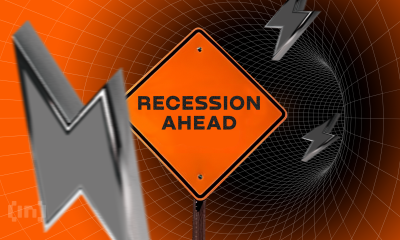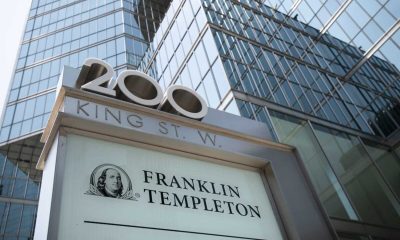Market
Real-World Asset Tokenization Tops Crypto Sector Performance
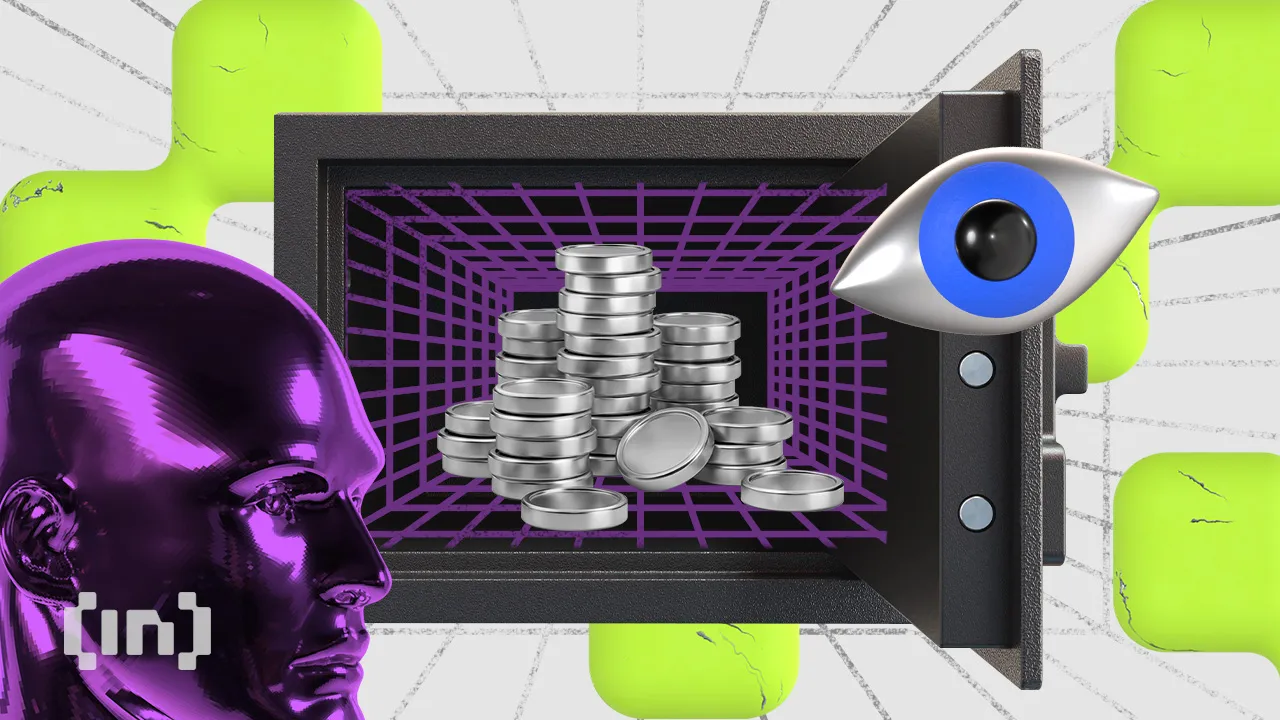
Real-world asset (RWA) tokenization has become the top-performing crypto sector, outperforming major sectors like Ethereum (ETH) and Bitcoin (BTC).
Significant developments, including high-profile asset tokenizations and positive regulatory discussions, drive this surge. It also highlights the sector’s growing potential and importance in the financial industry.
High-Profile Use Cases and Regulations Boost the RWA Tokenization Sector
According to data from the crypto analytics platform Artemis Terminal, real-world asset tokenization was the best-performing crypto sector last month, with a 58% performance compared to the other 21 sectors. Ethereum and Bitcoin ecosystems followed, with 26.1% and 18.2% performance, respectively.
Read more: RWA Tokenization: A Look at Security and Trust
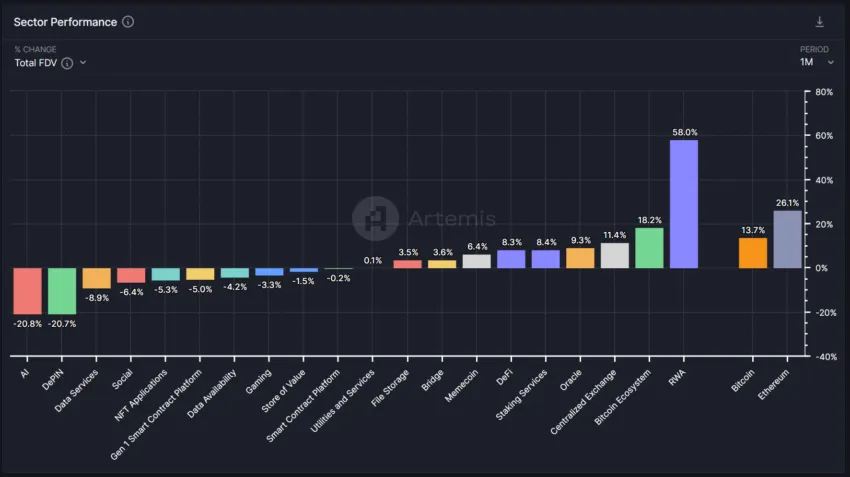
RWA tokenization has seen significant growth recently, driven by key developments in the sector. On June 4, Galaxy Digital issued a multimillion-dollar loan secured by a 316-year-old Stradivarius violin.
The loan uses the Stradivarius violin and its digital representation as a non-fungible token (NFT) as collateral. This strategy ensures strong security for Galaxy Digital while providing asset management flexibility. The physical violin remains under custodianship in Hong Kong, with stringent requirements for its removal.
On the same day, Watford Football Club (Watford FC) also initiated a digital equity sale. Partnering with digital investment platform Republic, the sale offers approximately 10% of its shares. This equity sale will be available on Republic’s platform and Seedrs, its European counterpart.
Additionally, regulatory developments supported the sector. On June 7, the US Financial Services Committee held a hearing titled “Next Generation Infrastructure: How Tokenization of Real-World Assets Will Facilitate Efficient Markets.” The hearing assessed the need for more regulations to support tokenizing real-world assets and derivative products.
Notable industry figures participated in the hearing. Carlos Domingo, Co-founder and CEO of Securitize, and Robert Morgan, CEO of the USDF Consortium, represented the real-world asset tokenization industry. Lilya Tessler, Partner at Sidley Austin LLP, and Nadine Chakar, Global Head of Digital Assets at the Depository Trust and Clearing Corporation, contributed from the financial markets sector. Meanwhile, Prof. Hilary Allen from the American University Washington College of Law provided an academic perspective.
Despite varied perspectives from witnesses and lawmakers, the hearing highlighted the ongoing debate about blockchain technology in traditional finance. Regulatory clarity from such discussions could pave the way for broader adoption of tokenization.
The long-term industry outlook remains positive. BlackRock CEO Larry Fink has expressed optimism about tokenization.
He noted its ability to enable customized strategies and instantaneous settlement of bonds and stocks. According to Fink, these abilities can significantly reduce settlement costs.
Jenny Johnson, Franklin Templeton CEO, also highlighted the transformative potential of tokenizing real-world assets. She cited examples such as Rihanna’s NFT royalties and loyalty programs at St. Regis in Aspen.
“It’s this combination of loyalty programs with real-world assets, and I think that you’re going to see more and more companies do this combination. It’s simply that the technology is enabling you to do it,” she opined.
Furthermore, Johnson noted that tokenizing assets, like Franklin Templeton’s tokenized money market fund, offers lower entry points and operational costs, making professional asset management more accessible to younger investors. She believes holding investments in a digital wallet can encourage younger people to save for retirement by allowing smaller, more manageable investments.
Read more: What is Tokenization on Blockchain?
Overall, Johnson envisions traditional finance institutions increasingly leveraging blockchain technology. This integration into mainstream investment practices aims to foster greater financial inclusion and encourage savings habits among younger generations.
Disclaimer
All the information contained on our website is published in good faith and for general information purposes only. Any action the reader takes upon the information found on our website is strictly at their own risk.
Market
XRP Price Vulnerable To Falling Below $2 After 18% Decline
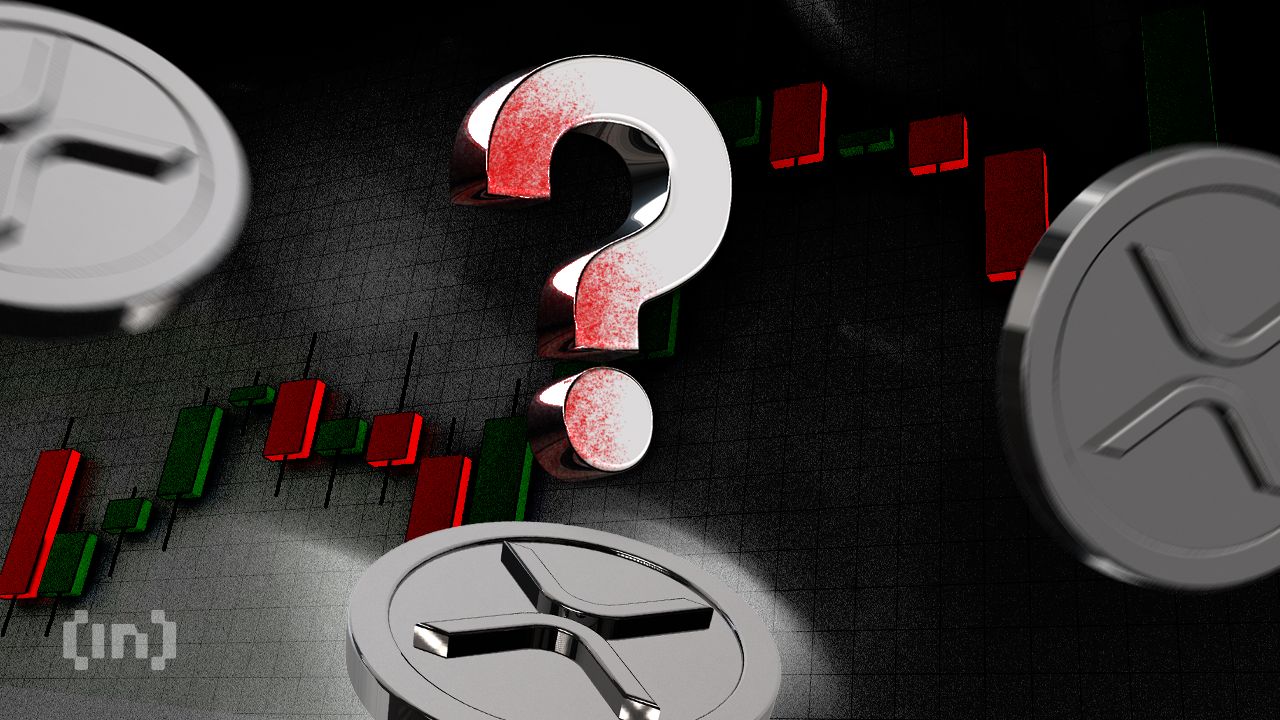
XRP has faced a significant correction in recent weeks, resulting in an 18% decline in the altcoin’s price. As a result, XRP is currently struggling to maintain upward momentum, with investors losing confidence.
This recent slump has raised concerns about the asset’s future, especially as certain XRP holders begin to sell their positions, increasing bearish pressure.
XRP Investors Are Pulling Back
The recent downturn in XRP’s price has triggered a sharp spike in the “Age Consumed” metric. This indicator tracks the movement of coins from long-term holders (LTHs) and has reached its highest level in over four months. The increase suggests that LTHs, who have been holding XRP for extended periods, are now losing patience.
This selling behavior may be driven by the lack of price recovery and the overall weak market conditions that have not improved. These holders appear to be attempting to limit their losses by liquidating their positions, which in turn increases the downward pressure on XRP’s price. This mass selling from LTHs further compounds the challenges for XRP, as their decision to sell is often seen as a sign of waning confidence in the cryptocurrency.
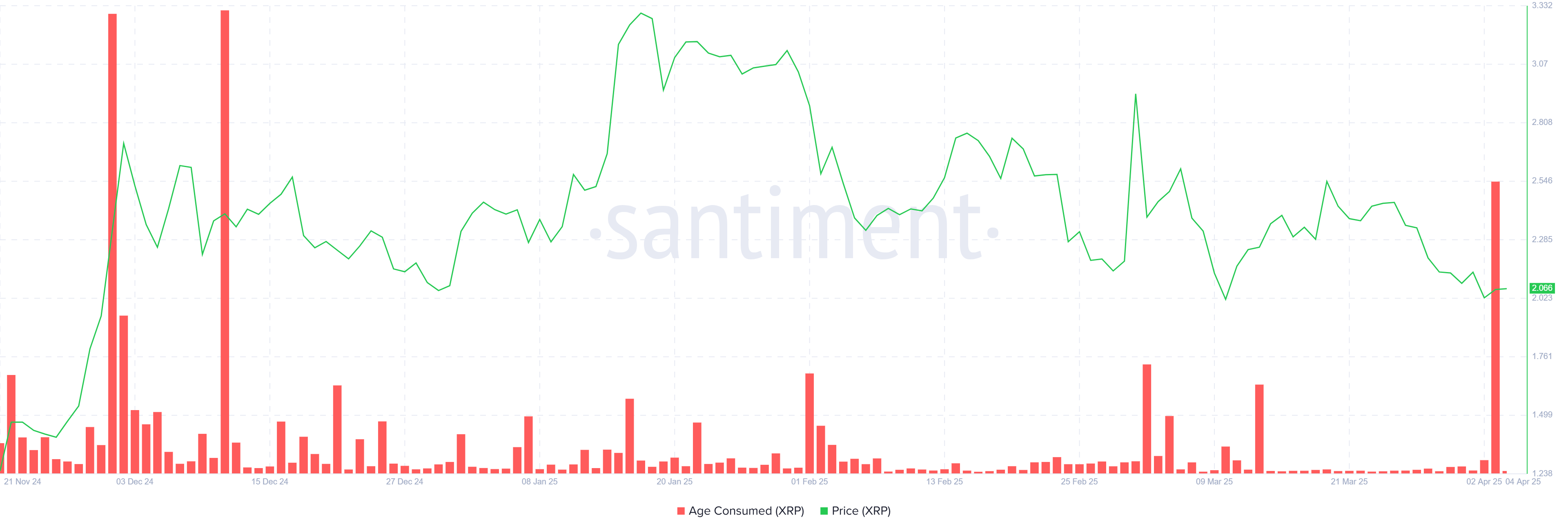
XRP’s market momentum appears to be weakening, as evidenced by the recent decline in the number of new addresses. The metric tracking new addresses has fallen to a five-month low, suggesting that XRP is struggling to attract new investors. This lack of fresh interest signals growing skepticism within the broader market, with potential investors hesitant to buy into an asset that has failed to deliver strong price action.
The drop in new addresses reflects a broader trend of reduced market traction and the lack of conviction from buyers. When combined with the selling pressure from LTHs, it creates a challenging environment for XRP to regain bullish momentum
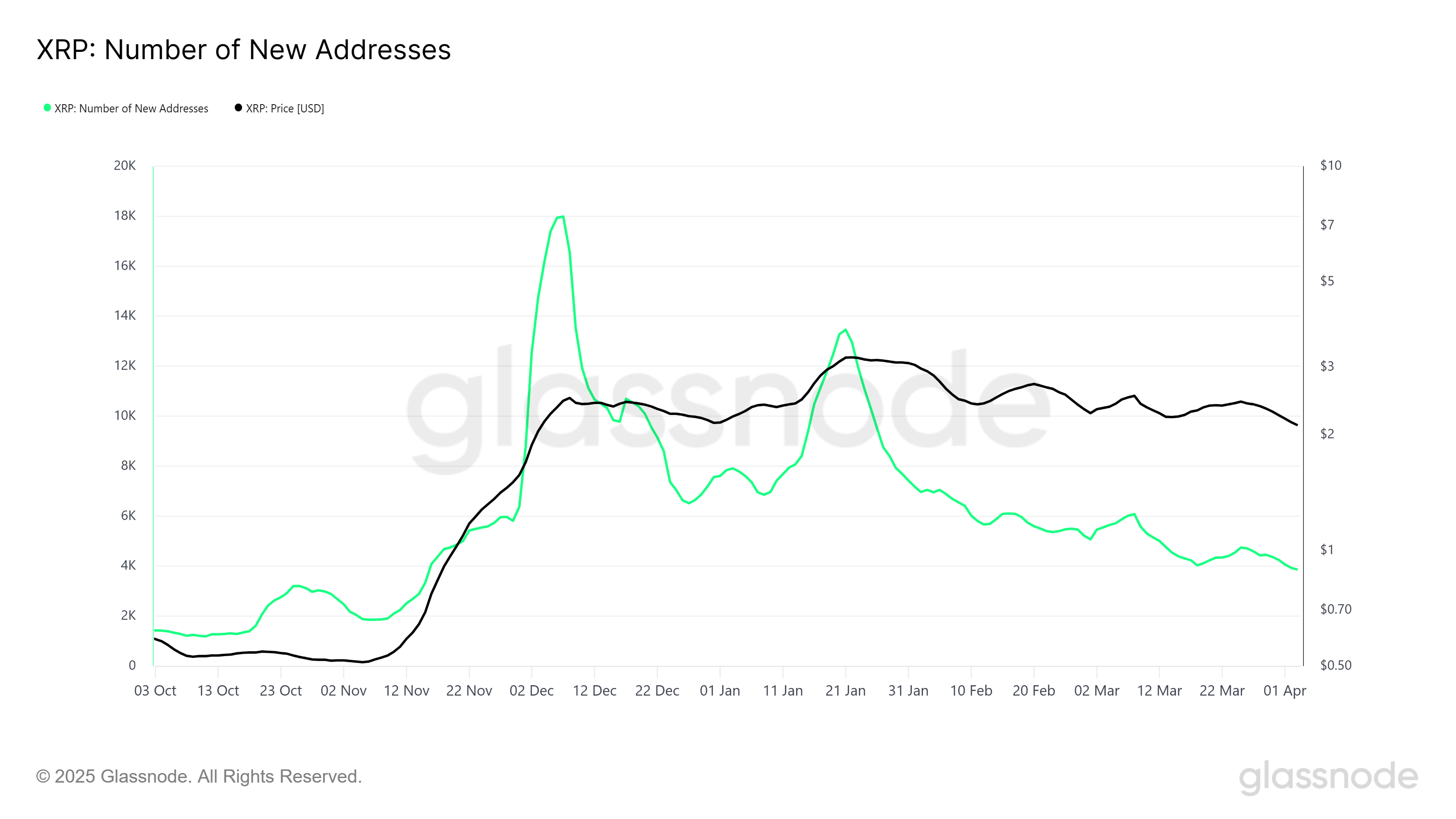
XRP Price Needs A Boost
XRP’s price is currently holding at $2.06, just above the key support level of $2.02. If it manages to stabilize and break through the immediate resistance at $2.14, there could be a potential rebound, taking XRP higher.
However, with the continued weakness in market sentiment and the aforementioned bearish cues, XRP remains vulnerable to further declines. If the support of $2.02 fails, the price could drop further to $1.94, extending the 18% decline noted in the last two weeks.
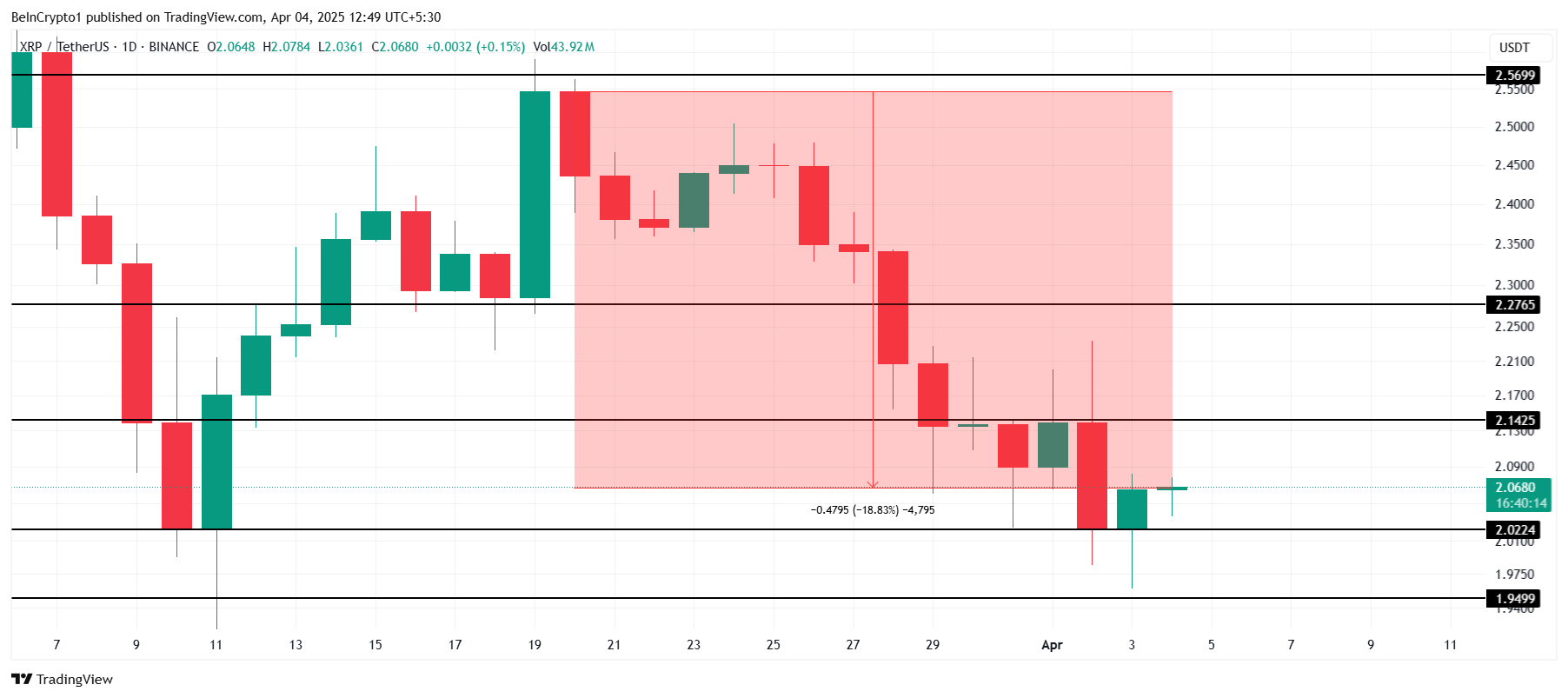
If XRP manages to reclaim the $2.14 level and holds above it, the price could make its way toward $2.27. Breaching this level would invalidate the bearish outlook, signaling a potential recovery and restoring investor confidence in the cryptocurrency.
Disclaimer
In line with the Trust Project guidelines, this price analysis article is for informational purposes only and should not be considered financial or investment advice. BeInCrypto is committed to accurate, unbiased reporting, but market conditions are subject to change without notice. Always conduct your own research and consult with a professional before making any financial decisions. Please note that our Terms and Conditions, Privacy Policy, and Disclaimers have been updated.
Market
HBAR Futures Traders Lead the Charge as Buying Pressure Grows

Hedera Foundation’s recent move to partner with Zoopto for a late-stage bid to acquire TikTok has sparked renewed investor interest in HBAR, driving a fresh wave of demand for the altcoin.
Market participants have grown increasingly bullish, with a notable uptick in long positions signaling growing confidence in HBAR’s future price performance.
HBAR’s Futures Market Sees Bullish Spike
HBAR’s long/short ratio currently sits at a monthly high of 1.08. Over the past 24 hours, its value has climbed by 17%, reflecting the surge in demand for long positions among derivatives traders.

An asset’s long/short ratio compares the proportion of its long positions (bets on price increases) to short ones (bets on price declines) in the market.
When the long/short ratio is above one like this, more traders are holding long positions than short ones, indicating bullish market sentiment. This suggests that HBAR investors expect the asset’s price to rise, a trend that could drive buying activity and cause HBAR’s price to extend its rally.
Further, the token’s Balance of Power (BoP) confirms this bullish outlook. At press time, this bullish indicator, which measures buying and selling pressure, is above zero at 0.25.
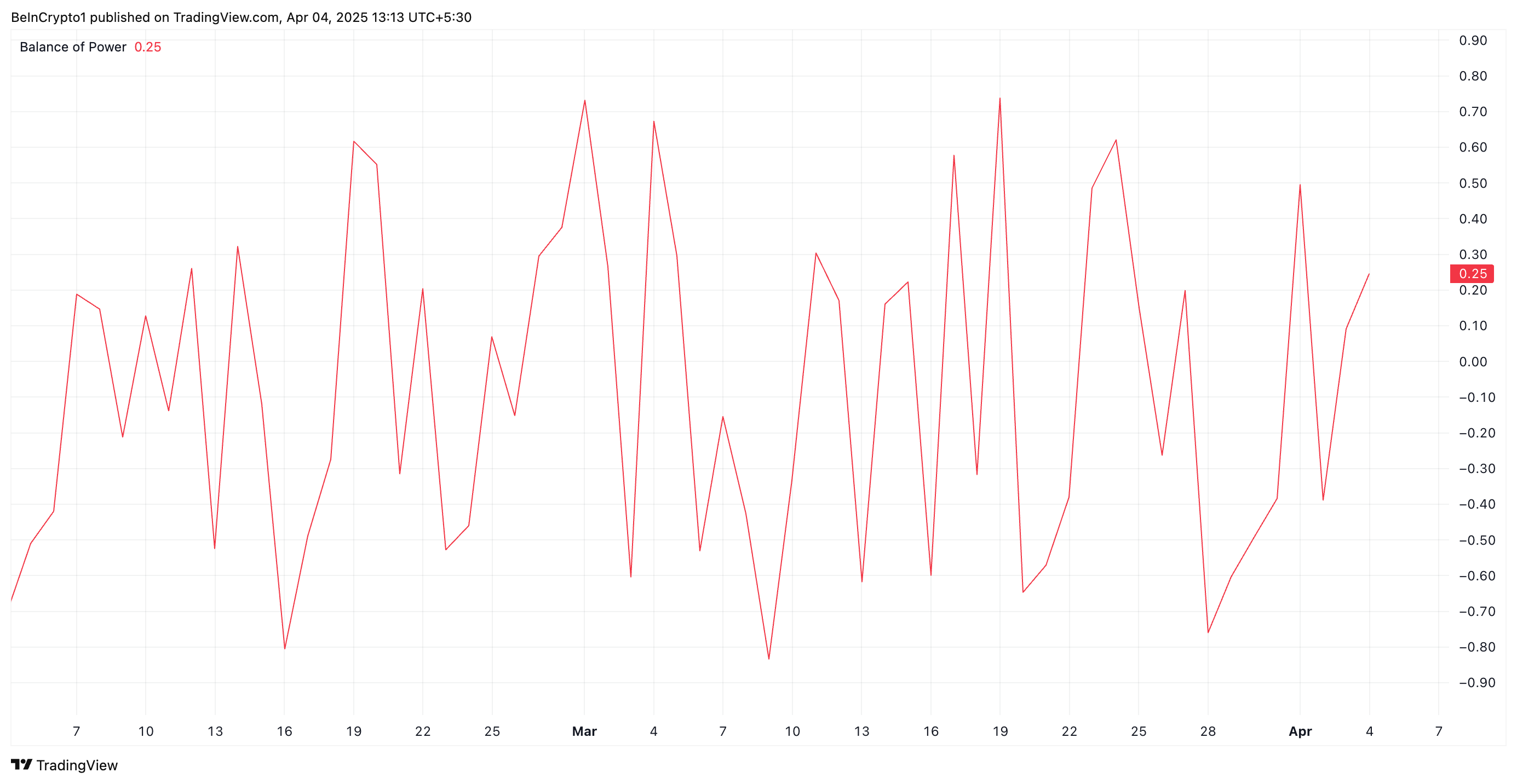
When an asset’s BoP is above zero, buying pressure is stronger than selling pressure, suggesting bullish momentum. This means HBAR buyers dominate price action, and are pushing its value higher.
HBAR Buyers Push Back After Hitting Multi-Month Low
During Thursday’s trading session, HBAR traded briefly at a four-month low of $0.153. However, with strengthening buying pressure, the altcoin appears to be correcting this downward trend.
If HBAR buyers consolidate their control, the token could flip the resistance at $0.169 into a support floor and climb toward $0.247.
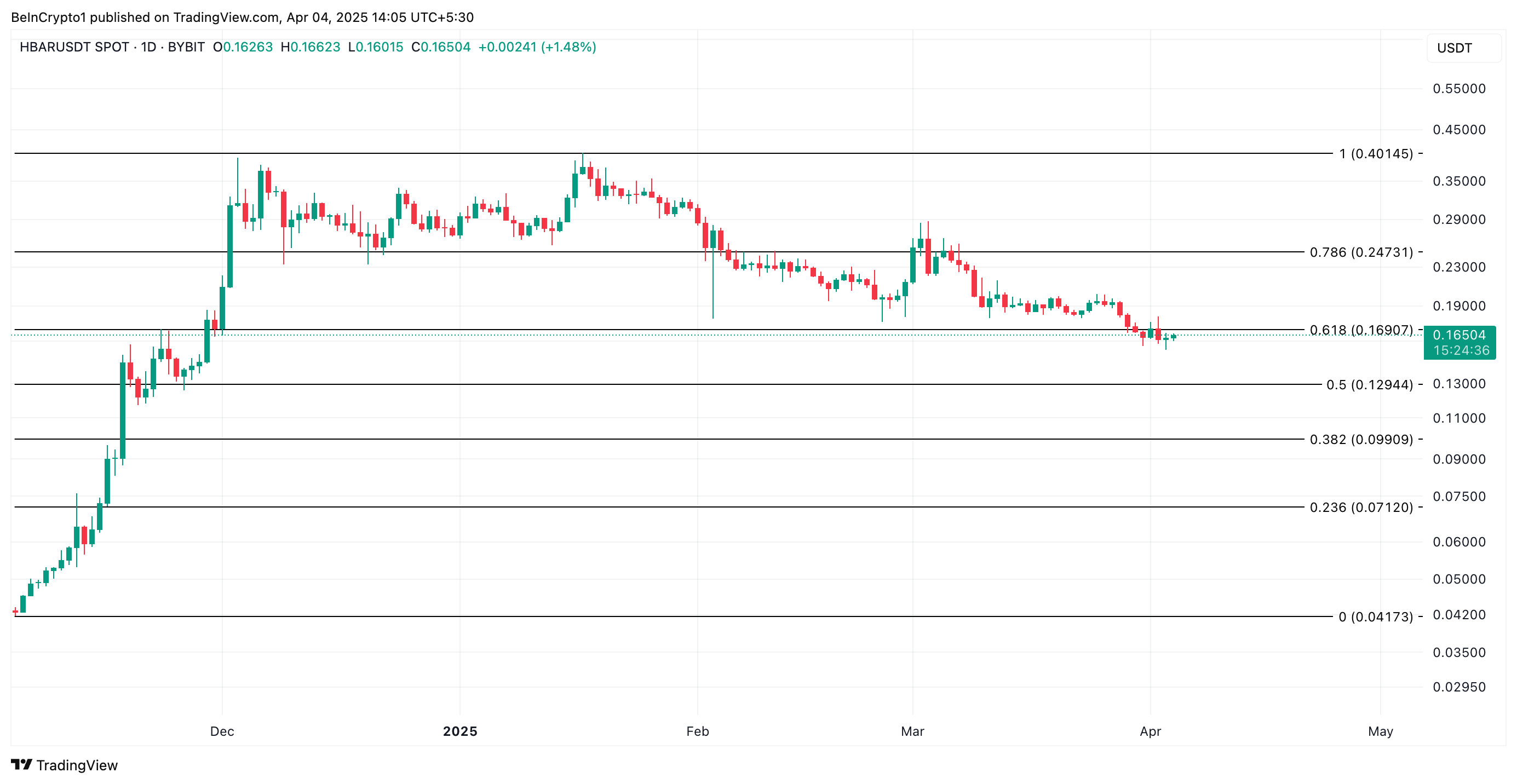
However, a resurgence in profit-taking activity will invalidate this bullish projection. HBAR could resume its decline and fall to $0.129 in that scenario.
Disclaimer
In line with the Trust Project guidelines, this price analysis article is for informational purposes only and should not be considered financial or investment advice. BeInCrypto is committed to accurate, unbiased reporting, but market conditions are subject to change without notice. Always conduct your own research and consult with a professional before making any financial decisions. Please note that our Terms and Conditions, Privacy Policy, and Disclaimers have been updated.
Market
Bitcoin is Far From a Bear Market But not Altcoins, Analysts Claim

Welcome to the US Morning Crypto Briefing—your essential rundown of the most important developments in crypto for the day ahead.
Grab a coffee to see how Bitcoin is holding firm above $79,000 despite a sharp equities sell-off. Markets are bracing for the March NFP report and rising recession risks. With Fed rate cuts on the table and ETF inflows staying strong, all eyes are on what’s next for macro and crypto markets.
Is Bitcoin in a Bear Market?
The highly anticipated March U.S. non-farm payrolls (NFP) report is due later today, and it’s expected to play a key role in shaping market sentiment heading into the weekend.
“With the key macro risk event now behind us, attention turns to tonight’s non-farm payroll report. Investors are bracing for signs of softness in the U.S. labour market. A weaker-than-expected print would bolster the case for further Fed rate cuts this year, as policymakers attempt to cushion a decelerating economy. At the time of writing, markets are pricing in four rate cuts in 2025—0.25 bps each in June, July, September and December,” QCP Capital analysts said.
Traditional markets are increasingly pricing in a recession, with equities retreating sharply—a 7% decline overall, including a 5% drop just yesterday. This broad de-risking environment helps explain the current pause in crypto inflows.
On the derivatives front, QCP adds:
“On the options front, the desk continues to observe elevated volatility in the short term, with more buyers of downside protection. This skew underscores the prevailing mood – uncertain and cautious.”
However, they also note that “with positioning now light and risk assets largely oversold, the stage may be set for a near-term bounce.”
Bitcoin remains resilient despite market volatility, holding above $79,000 with strong ETF inflows and signs of decoupling from stocks and altcoins. According to Nic Puckrin, crypto analyst, investor, and founder of The Coin Bureau: “Bitcoin is nowhere near a bear market at this stage. The future of many altcoins, however, is more questionable.”
Chart of the Day
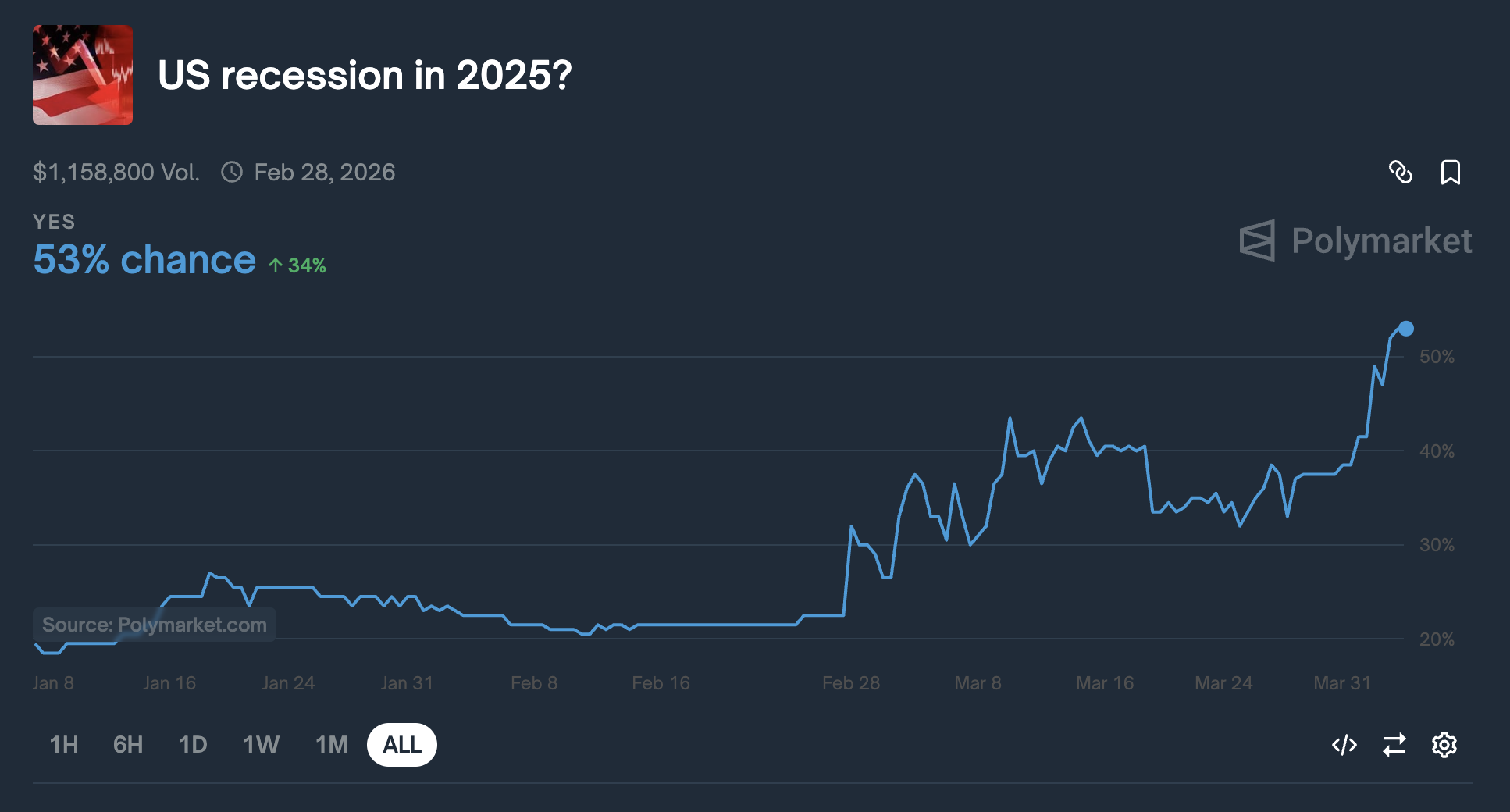
Chances of a US Recession in 2025 jumped above 50% for the first time, currently at 53%.
Byte-Sized Alpha
– Major ETF issuers are buying Bitcoin, with $220 million in inflows showing strong confidence despite volatility.
– Futures show bullish BTC sentiment, but options traders remain cautious, signaling mixed market outlook.
– Coinbase is launching XRP futures after Illinois lawsuit relief, signaling growing regulatory support for crypto.
– Despite Trump’s tariff-driven crash, analysts see potential for a Bitcoin rebound—though inflation may cap gains.
– The Anti-CBDC bill passed a key House vote, aiming to block Fed-issued digital currencies and protect privacy.
– Today at 11:25 AM, Fed Chair Jerome Powell will deliver a speech on the U.S. economic outlook.
Disclaimer
In line with the Trust Project guidelines, this price analysis article is for informational purposes only and should not be considered financial or investment advice. BeInCrypto is committed to accurate, unbiased reporting, but market conditions are subject to change without notice. Always conduct your own research and consult with a professional before making any financial decisions. Please note that our Terms and Conditions, Privacy Policy, and Disclaimers have been updated.
-

 Market23 hours ago
Market23 hours agoBinance Managed 94% of All Crypto Airdrops and Staking Rewards
-
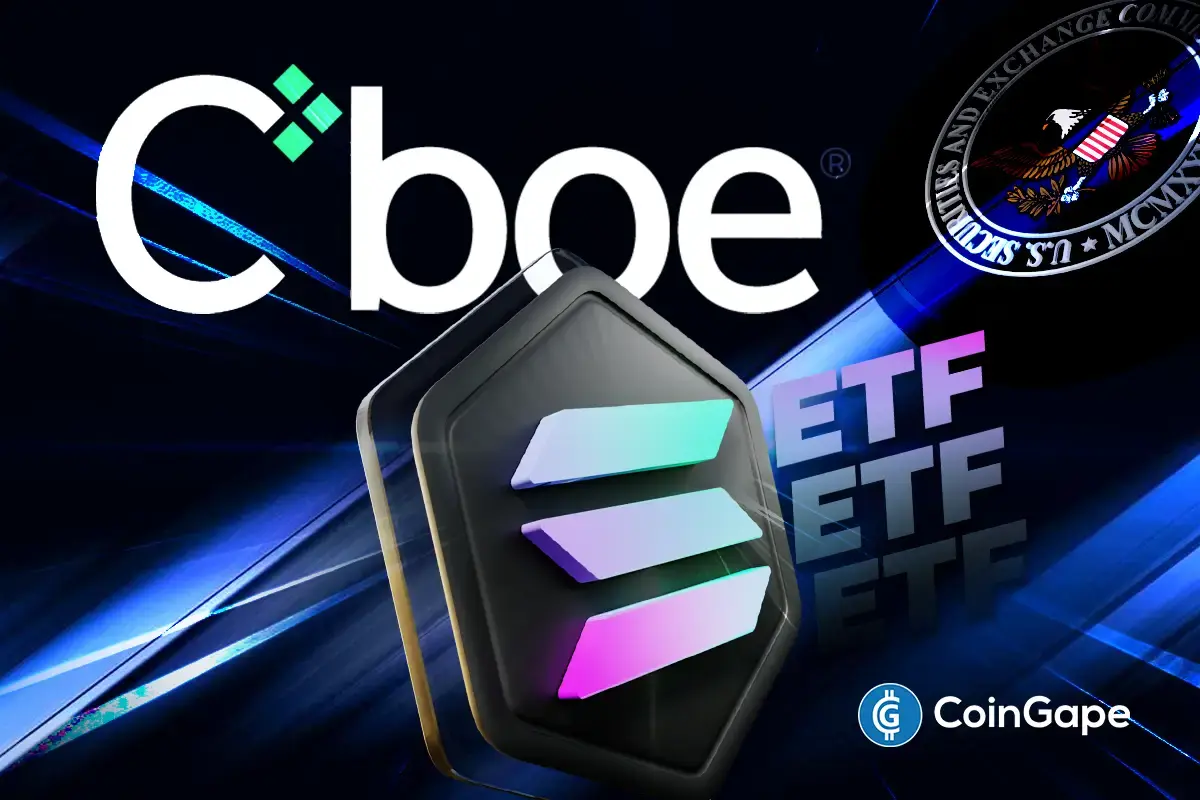
 Regulation22 hours ago
Regulation22 hours agoUS SEC Acknowledges Fidelity’s Filing for Solana ETF
-

 Market20 hours ago
Market20 hours agoWormhole (W) Jumps 10%—But Is a Pullback Coming?
-
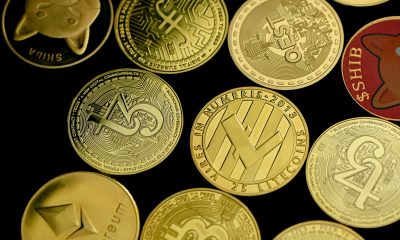
 Altcoin20 hours ago
Altcoin20 hours agoAltcoin Season Still In Sight Even As Ethereum Struggles To Gain Upward Momentum
-

 Market22 hours ago
Market22 hours agoXRP Battle Between Bulls And Bears Hinges On $1.97 – What To Expect
-

 Market21 hours ago
Market21 hours agoRipple Shifts $1B in XRP Amid Growing Bearish Pressure
-

 Market19 hours ago
Market19 hours agoBinance’s CZ is Helping Kyrgyzstan Become A Crypto Hub
-

 Altcoin19 hours ago
Altcoin19 hours agoHere’s Why Is Shiba Inu Price Crashing Daily?




